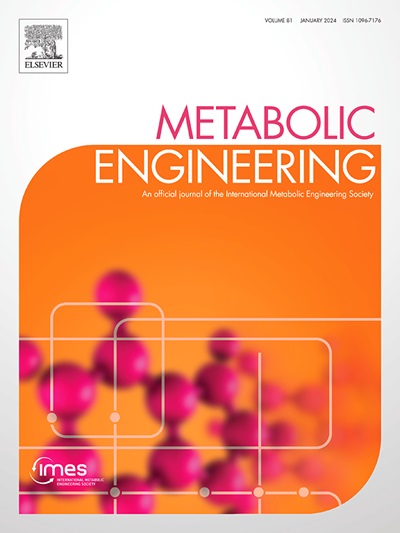Mechanism and engineering of endoplasmic reticulum-localized membrane protein folding in Saccharomyces cerevisiae
IF 6.8
1区 生物学
Q1 BIOTECHNOLOGY & APPLIED MICROBIOLOGY
引用次数: 0
Abstract
Correct folding of endoplasmic reticulum (ER)-localized membrane proteins, such as cytochrome P450, endows a synthetic biology host with crucial catalytic functions, which is of vital importance in the field of metabolic engineering and synthetic biology. However, due to complexed interaction with cellular membrane environment and other proteins (e.g., molecular chaperone) regulation, a substantial proportion of heterologous membrane proteins cannot be properly folded in the ER of Saccharomyces cerevisiae, a widely used synthetic biology host. In this review, we first introduce the four steps in membrane protein folding process and the affecting factors including the amino acid sequence of membrane protein, the folding process, molecular chaperones, quality control mechanism, and lipid environment in S. cerevisiae. Then, we summarize the metabolic engineering strategies to enhance the correct folding of ER-localized membrane proteins, such as by engineering and de novel design of membrane protein, regulation of the co-translational folding process, co-expression of molecular chaperones, modulation of ER quality, and lipids engineering. Finally, we discuss the limitations of current strategies and propose future research directions to address the key issues.
酿酒酵母内质网定位膜蛋白折叠机理及工程研究。
内质网(ER)定位膜蛋白如细胞色素P450的正确折叠,赋予了合成生物学宿主至关重要的催化功能,在代谢工程和合成生物学领域具有重要意义。然而,由于与细胞膜环境和其他蛋白质(如分子伴侣)调控的复杂相互作用,相当一部分外源膜蛋白在酿酒酵母(Saccharomyces cerevisiae)的内质网中不能正常折叠。酿酒酵母是一种广泛使用的合成生物学宿主。本文首先介绍了酿酒酵母膜蛋白折叠过程的四个步骤及其影响因素,包括膜蛋白氨基酸序列、折叠过程、分子伴侣、质量控制机制和脂质环境。在此基础上,综述了提高内质网定位膜蛋白正确折叠的代谢工程策略,包括膜蛋白的工程化和创新设计、共翻译折叠过程的调控、分子伴侣的共表达、内质网质量的调控以及脂质工程。最后,我们讨论了当前策略的局限性,并提出了未来的研究方向,以解决关键问题。
本文章由计算机程序翻译,如有差异,请以英文原文为准。
求助全文
约1分钟内获得全文
求助全文
来源期刊

Metabolic engineering
工程技术-生物工程与应用微生物
CiteScore
15.60
自引率
6.00%
发文量
140
审稿时长
44 days
期刊介绍:
Metabolic Engineering (MBE) is a journal that focuses on publishing original research papers on the directed modulation of metabolic pathways for metabolite overproduction or the enhancement of cellular properties. It welcomes papers that describe the engineering of native pathways and the synthesis of heterologous pathways to convert microorganisms into microbial cell factories. The journal covers experimental, computational, and modeling approaches for understanding metabolic pathways and manipulating them through genetic, media, or environmental means. Effective exploration of metabolic pathways necessitates the use of molecular biology and biochemistry methods, as well as engineering techniques for modeling and data analysis. MBE serves as a platform for interdisciplinary research in fields such as biochemistry, molecular biology, applied microbiology, cellular physiology, cellular nutrition in health and disease, and biochemical engineering. The journal publishes various types of papers, including original research papers and review papers. It is indexed and abstracted in databases such as Scopus, Embase, EMBiology, Current Contents - Life Sciences and Clinical Medicine, Science Citation Index, PubMed/Medline, CAS and Biotechnology Citation Index.
 求助内容:
求助内容: 应助结果提醒方式:
应助结果提醒方式:


